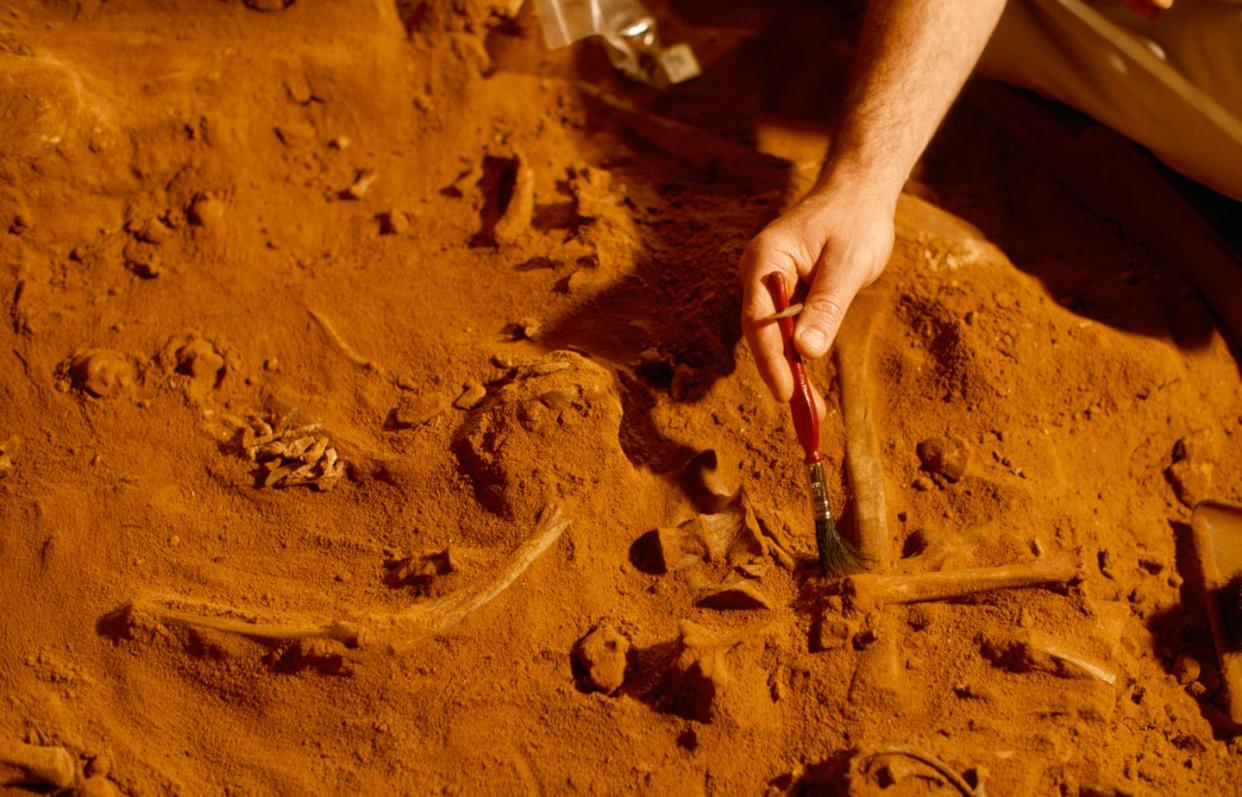A Startling Discovery Found Mandibles in 500-Million-Year-Old Fossils. It Doesn't Make Sense.

"Hearst Magazines and Yahoo may earn commission or revenue on some items through these links."
A majority of species in the animal kingdom use mandibles for eating, and this bright idea might’ve originated with the Cambrian arthropod Odaraia alata.
A new study led by scientists at the Royal Ontario Museum (ROM), after analyzing pristine fossil samples from the Burgess Shale in British Columbia, concluded that O. alata was likely one of the first arthropods with mandibles, a departure from previous research that suggested the animal could be a filter feeder.
The authors suggest that this biological trait likely set off an evolutionary arms race as mandibles allowed O. alata to break down large structures and access more sources of food.
Every once in a while, evolution stumbles across a good idea and really runs with it. Despite its odd appearance, the Cambrian creature Odaraia alata—an arthropod whose taco-shaped carapace gives it an otherworldly appearance—is one of those good ideas. While its protective body didn’t survive beyond the Cambrian, its mandible mouth structure certainly did, as around 70 percent of all animals today, from insects to crustaceans, use similar methods for gobbling up sustenance.
However, Odaraia alata’s place as one of the very first creatures with mandibles is actually a new discovery by scientists at the Royal Ontario Museum (ROM). While analyzing pristine fossil samples pulled from the Burgess Shale, one of the most diverse and well-preserved fossil sites in the world and located in Canada’s British Columbia, scientists noticed jagged edges near the ancient arthropod’s mouth—a distinctive feature of mandibulates. The results of the study were published in the journal Proceedings of the Royal Society B.
“The head shield of Odaraia envelops practically half of its body including its legs, almost as if it were encased in a tube,” Alejandro Izquierdo-López, lead author who worked on the study as a student at the University of Toronto, said in a press statement. He continued:
“Previous researchers had suggested this shape would have allowed Odaraia to gather its prey, but the capturing mechanism had eluded us, until now. Odaraia had been beautifully described in the 1980s, but given the limited number of fossils at that time and its bizarre shape, two important questions had remained unanswered: is it really a mandibulate? And what was it feeding on?”
With 30 legs and stretching some 8 inches long—a relatively large size for an animal for that specific geologic period, which likely allowed it to roam more open seas—O. alata and its method of munching remained a mystery mainly because fossils couldn’t detail these small and intricate mouth parts. This led some scientists to surmise that maybe O. alata was a filter feeder with its carapace aiding in the flow of water, but the results were inconclusive.
Of the 150 specimens used in this new study, 24 of them came from the Burgess Shale, according to The New York Times. The Burgess Shale is known specifically for its high-quality preservation of soft body parts due to various sedimentary advantages that restricted oxidant flow during these animals’ early burial. Because of this favorable sedimentary environment, Izquierdo-López and his team could see details hidden from previous attempts to describe this 500-million-year-old creature.
“The Burgess Shale has been a treasure trove of paleontological information,” ROM curator and study co-author Jean-Bernard Caron said in a press statement. “We already know a substantial amount about the early evolution of mandibulates. However, some other species had remained quite enigmatic, like Odaraia.”
These new fossils give a clearer picture that O. alata contributed to an evolutionary arms race as its mandibles allowed the animal to break down large structures into smaller pieces and gain access to different types of food. To keep up with the competition, other animals would also need to develop similar strategies to survive in the Cambrian and beyond, and the result of this competition can be seen today in the many mandibles found in species around the globe.
You Might Also Like





















